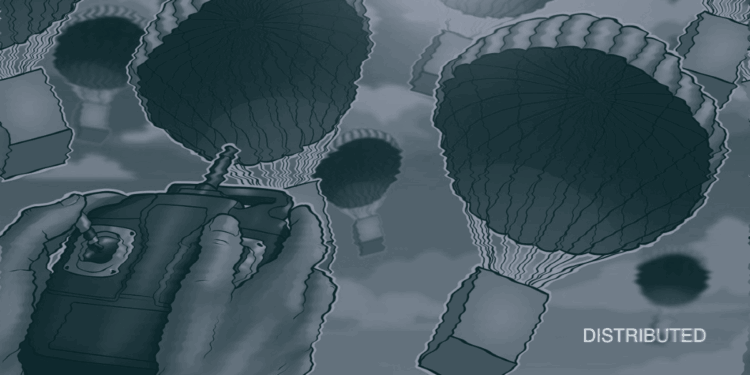Retroactive Airdrops are among the frequent ways to reward early adopters in the fast-changing world of cryptocurrencies. The main difference of such an airdrop from all the rest is that it gives a reward to those who, one way or another, helped develop or build a project since its very beginning.
Unlike traditional airdrops that give out tokens at one point in time, retroactive airdrops credit users with tokens based on their past activity on the platform. This model has been of special interest to crypto-enthusiasts willing to monetize on early entry.
What are retroactive airdrops? The retroactive airdrop is a reward for one’s past actions. This differs from the traditional form of airdrop, which was more of a marketing strategy to lure more users to join them. In contrast, retroactive airdrop means giving value in return to those who have created value already.
The early adopters who had interacted with these protocols, at times during the test including such projects as Uniswap and Ethereum Name Service-have undergone distribution in the form of retroactive airdrops.
See Related: First Leveraged MicroStrategy ETF Approved by SEC
Event-Based Rewards
These are always event-based rewards that usually depend on actions like token holding, usage of dApps, or even governance events.
Core Differences between Retroactive and Traditional Airdrop
Retroactive and traditional airdrops may also have the same goal of distributing tokens, but the goals behind them are really very different. Traditional airdrops have the ultimate goal of raising awareness or driving user growth via the wide distribution of free tokens, mostly in return for very low-friction tasks like following a project on social media.
On the other hand, retroactive airdrops are kept only for those who bring something valuable in: early involvement in the project, trying their functions out, or helping their community. That is why retroactive airdrops are considered a way of rewarding loyalty in the building of better and stronger long-term communities.
How Retroactive Airdrops Work
The process of receiving a retroactive airdrop typically involves several stages. First, projects analyze blockchain data to identify users who have engaged with their platform in meaningful ways. These are later informed about their eligibility and given instructions on how they can claim their rewards.
The distribution methodology of the airdrop would usually be very transparent, hence ensuring the whole process is fair and open. Notable examples of successful retroactive airdrops include Uniswap’s UNI token and ENS’s distribution to users who had registered .eth domains.
Popular Platforms for Retroactive Airdrops
Different blockchain ecosystems have adopted the retroactive airdrop model. Projects such as zkSync, Starknet, and Optimism have already carried out or are expected to carry out retroactive airdrops as a way of rewarding those who have been using their networks early enough. For example, zkSync-an Ethereum Layer-2 scaling solution intends to reward users who, for one reason or another, bridge funds or generally interact with its deployed dApps. Another Layer-2 solution, Starknet, is also expected to issue tokens to its active users.
Retrodrop Farming: Maximizing Rewards
One of the more interesting things that come along with retroactive airdrops is the so-called “retrodrop farming.” The approach presumes participation in numerous cryptocurrency projects in anticipation of qualifying for retroactive airdrops in the future. Users can improve their chances by providing liquidity, voting in governance proposals, or testing new features on decentralized platforms.
Unlike yield farming, which focuses on earning immediate rewards through DeFi protocols, retrodrop farming is more speculative, with rewards often realized months after participation. While retrodrop farming can be profitable, it requires strategic engagement and time investment.
Strategies for Increasing Retrodrop Eligibility
To increase eligibility for retroactive airdrops, users should adopt several strategies:
● Diversify Engagement: Be actively engaged on many different levels of decentralized platforms, from DeFi and governance to NFTs in all sectors.
● Liquidity provision: definitely, providing liquidity to either DEXes or any other protocols will increase the chances of receiving retroactive rewards.
● Governance Participation: Voting on important proposals or staking tokens in governance systems can increase a user’s standing within a project and improve the likelihood of receiving airdrops.
Risks in Retrodrop Farming
While retro-drop farming can be lucrative, it is not without risks. One major concern is multi-accounting or Sybil attacks, where users attempt to manipulate the system by creating multiple accounts to maximize their rewards. Many projects have implemented measures to detect such practices, which can result in disqualification from the airdrop. Additionally, users should be cautious of phishing schemes during the token claim process. It is essential to verify the legitimacy of the airdrop source and avoid sharing sensitive information like private keys.
Can Retroactive Airdrops Be Profitable?
The profitability of retroactive airdrops varies. While some early adopters have made substantial gains—like those who received free UNI tokens from Uniswap—success depends on several factors, including the value of the project’s token post-launch and the user’s level of engagement.
Strategic participation in emerging projects, consistent interaction with platforms, and holding tokens over the long term can enhance the likelihood of receiving valuable retroactive rewards.
Final Thoughts: Is Retrodrop Farming Worth It?
Retrodrop farming could turn out to be very profitable to investors who put in the time and effort of proactive participation with promising blockchains. It is, however, an activity that requires finding the right balance between patience, strategy, and attention to detail. Frequent interactions on a number of platforms, participation in governance, or the provision of liquidity increase one’s chances of getting huge retroactive airdrops.
Just like any other investment approach, one must consider the associated risks: the possibility of some sort of security vulnerability or of losing one’s eligibility for rewards. For those seriously committed to researching the long-term benefits derived from early involvement in the cryptocurrency ecosystem, retroactive airdrops are a very interesting opportunity to earn rewards on early contributions.



